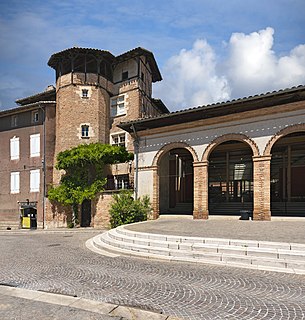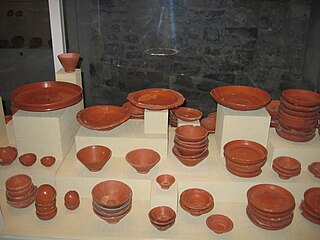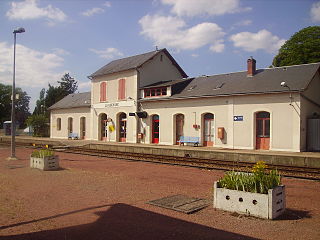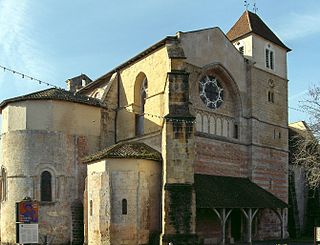
Aigues-Mortes is a commune in the Gard department in the Occitania region of southern France. The medieval city walls surrounding the city are well preserved. Situated on the junction of the Canal du Rhône à Sète and the Chenal Maritime to Le Grau-du-Roi, the town is a transit center for canal craft and Dutch barges.

Tarn is a department in the Occitania region in Southern France. Named after the river Tarn, it had a population of 389,844 as of 2019. Its prefecture and largest city is Albi; it has a single subprefecture, Castres. In French, the inhabitants of Tarn are known as Tarnais (masculine) and Tarnaises (feminine). Its INSEE and postcode number is 81.

The following is a list of the 314 communes of the Tarn department of France.

Millau is a commune in the Aveyron department in the Occitanie region in Southern France. One of two subprefectures in Aveyron alongside Villefranche-de-Rouergue, it is located 70 kilometres (43 mi) to the southeast of the prefecture, Rodez. With a population of 22,002 as of 2018, it is situated at the confluence of the rivers Tarn and Dourbie, and is surrounded by the landscapes of Gorges du Tarn and Causse du Larzac. It is part of the former province of Rouergue where people also communicate through Rouergat, a dialect of the Occitan language. Its inhabitants are called Millavois (masculine) and Millavoises (feminine). The territory of the commune is part of the Regional Natural Park of Grands Causses, part of the larger Causses and Cévennes UNESCO World Heritage Site.

Gaillac is a commune in the Tarn department in southern France. It had in 2013 a population of 14,334 inhabitants.

La Graufesenque is an archaeological site 2 km from Millau, Aveyron, France, at the confluence of the rivers Tarn and Dourbie. As Condatomagus, it was famous in the Gallo-Roman period for the production of high quality dark red terra sigillata Roman pottery, which was made in vast quantities and exported over much of the western part of the Roman Empire.

Saint-Martin-d'Ardèche is a commune in the department of Ardèche in Southern France.

Aubais is a commune in the Gard department in southern France.

Gaillac AOC is an Appellation d'Origine Contrôlée (AOC) in South West France in the département of Tarn, just north of Toulouse.

Aigues-Vives is a commune in the Aude department in the Occitanie region of southern France.

La Guerche-sur-l'Aubois is a commune in the Cher department in the Centre-Val de Loire region of France.

Lisle-sur-Tarn is a commune in the Tarn department in southern France.

Castelnau-de-Montmiral is a commune in the Tarn department in southern France.

Sorde-l'Abbaye is a commune, in the department of Landes and the region of Nouvelle-Aquitaine in southwestern France.

Auvillar is a commune in the department of Tarn-et-Garonne and the Occitanie region, situated at the edge of the Lomagne region on the banks of the Garonne river. Since 1994, Auvillar has been voted one of the "most beautiful villages in France" with its harbor area and outstanding monuments like the circular hall, the clock tower and the Church of St. Peter. Auvillar is a stop for tourists and pilgrims on the Santiago de Compostela pilgrimage route.

Montricoux is a commune in the Tarn-et-Garonne department in the Occitanie region in southern France. It is located along the banks of the Aveyron, between Nègrepelisse and Bruniquel. The written history of the commune dates back to the eighth century. The Château de Montricoux, built by the Knights Templar, now houses the Marcel-Lenoir Museum, which preserves 130 drawings, pastels, watercolors, oils, and frescoes by this artist, a resident of the town.
Monteils is a commune in the Tarn-et-Garonne department in the Occitanie region in southern France.

Vaour is a commune and cantonal administrative centre located in the northwestern part of the Tarn department in southern France.
The Tarn department is situated in the southwest of France.
Communauté d'agglomération Gaillac-Graulhet is the communauté d'agglomération, an intercommunal structure, centred on the towns of Gaillac and Graulhet. It is located in the Tarn department, in the Occitania region, southern France. Created in 2017, its seat is in Gaillac. Its area is 1164.4 km2. Its population was 74,286 in 2019.























